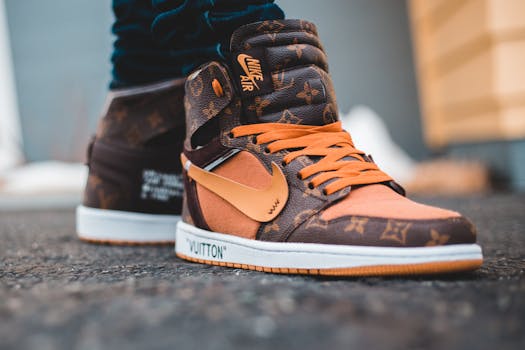
Takeaways

Understanding Sustainable Luxury
The Definition of Sustainable Luxury

The Growing Demand for Eco-Friendly Fashion
As consumers become more environmentally conscious, there is an increasing demand for sustainable luxury fashion. Shoppers today are more informed and concerned about the origins of their purchases. A survey by McKinsey revealed that 67% of consumers consider the use of sustainable materials important when making a luxury purchase. This shift is not only influencing consumer behavior but also compelling brands to adapt their practices to meet these new expectations.
Impact of Social Media and Influencers
The rise of social media has played a pivotal role in promoting sustainable luxury fashion. Influencers and celebrities are increasingly using their platforms to advocate for eco-friendly brands and lifestyle choices. This visibility is helping to educate consumers about the importance of sustainability in fashion and encouraging them to make more responsible purchasing decisions. The hashtag #SustainableFashion has gained significant traction, creating a community of eco-conscious consumers who share their sustainable choices and inspire others to follow suit.
The Key Players in Sustainable Luxury Fashion
Notable Sustainable Luxury Brands
Several luxury brands are leading the charge in sustainable fashion. Brands like Stella McCartney have been pioneers in promoting cruelty-free and eco-friendly practices in luxury apparel. McCartney’s commitment to sustainability is reflected in her use of organic cotton, recycled polyester, and innovative materials that reduce environmental impact.
Another key player is Gucci, which has launched initiatives aimed at reducing its carbon footprint and promoting circular fashion. The luxury brand has set ambitious goals for sustainability, including a commitment to becoming carbon neutral across its supply chain.
Similarly, brands like Eres and Reformation are making waves in the industry by prioritizing sustainable materials and ethical labor practices. These brands are not only appealing to eco-conscious consumers but also proving that luxury and sustainability can coexist.
Innovations in Sustainable Materials
The innovation in sustainable materials is a significant aspect of the rise of sustainable luxury. Luxury brands are exploring alternatives to traditional fabrics, such as organic cotton, Tencel, and recycled polyester. Some brands are even experimenting with bio-fabrication, creating materials from fungi, algae, and other organic materials.
For instance, the brand Bolt Threads has developed a silk alternative made from yeast, sugar, and water. This innovative approach not only reduces the environmental impact associated with traditional silk production but also offers a cruelty-free alternative.
These advancements in material science are crucial for the future of sustainable luxury, enabling brands to produce high-quality products without compromising on ethical standards.
The Role of Transparency and Traceability
Transparency and traceability are vital components of sustainable luxury. Consumers are increasingly demanding to know the origins of their products and the practices employed in their production. Brands that provide clear information about their supply chains and manufacturing processes are more likely to gain the trust of eco-conscious consumers.
Many luxury brands are now implementing technologies like blockchain to enhance transparency. This technology allows consumers to trace the journey of a product from its raw materials to the final product, ensuring ethical practices throughout the supply chain. Brands like Everlane have adopted a “radical transparency” model, openly sharing their production costs and the ethical practices behind their products.
Challenges Facing Sustainable Luxury Brands
Balancing Luxury and Sustainability

Luxury brands need to emphasize that sustainability does not mean sacrificing quality or aesthetics. Instead, it should be viewed as an enhancement of the luxury experience—offering consumers products that are not only beautiful and well-crafted but also ethically produced.
Cost Implications of Sustainable Practices
Implementing sustainable practices often comes with higher costs, which can be a barrier for many luxury brands. Sustainable materials, ethical labor, and transparent supply chains can lead to increased production costs, which may translate into higher prices for consumers.
However, many luxury consumers are willing to pay a premium for sustainable products, recognizing the value of ethical consumption. Brands that can effectively communicate their commitment to sustainability and the benefits it brings are likely to find a receptive audience.
Consumer Education and Awareness
Despite the growing interest in sustainable fashion, there is still a need for consumer education. Many consumers may not fully understand the implications of their purchasing decisions or the importance of sustainability in fashion. Brands must take on the responsibility of educating their customers about the benefits of sustainable luxury and the role they play in promoting positive change.
Workshops, social media campaigns, and collaborations with environmental organizations can help raise awareness and foster a culture of sustainability within the luxury fashion industry.
The Future of Sustainable Luxury
Trends Shaping Sustainable Luxury Fashion

Second-hand luxury shopping is also gaining popularity, as consumers seek to reduce waste and find unique pieces. Platforms like The RealReal and Vestiaire Collective are thriving by offering authenticated second-hand luxury items, promoting a more sustainable approach to luxury consumption.
The Role of Technology in Sustainable Fashion
Technology is poised to play a crucial role in the future of sustainable luxury. Innovations such as 3D printing, AI-driven design, and virtual reality are transforming the way products are created and marketed. These technologies can help reduce waste, streamline production processes, and enhance the overall consumer experience.
For example, 3D printing allows for on-demand production, minimizing excess inventory and waste. AI can optimize design processes, ensuring that materials are used efficiently and sustainably. As technology continues to advance, it will provide luxury brands with new tools to enhance sustainability.
Consumer Behavior and the Shift Towards Conscious Consumption
The shift towards sustainable luxury reflects a broader change in consumer behavior. Today’s consumers are increasingly prioritizing ethical and sustainable choices over traditional notions of luxury. This shift is driven by a desire to make a positive impact on the world and to support brands that align with their values.
As more consumers embrace conscious consumption, luxury brands will need to adapt to these changing preferences. Brands that can authentically communicate their sustainability efforts, engage with consumers on social media, and foster a sense of community around shared values will likely thrive in this new landscape.







